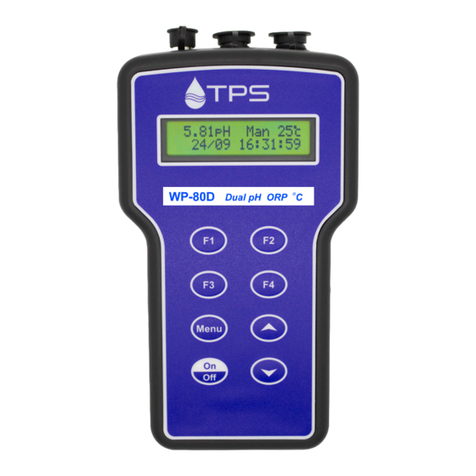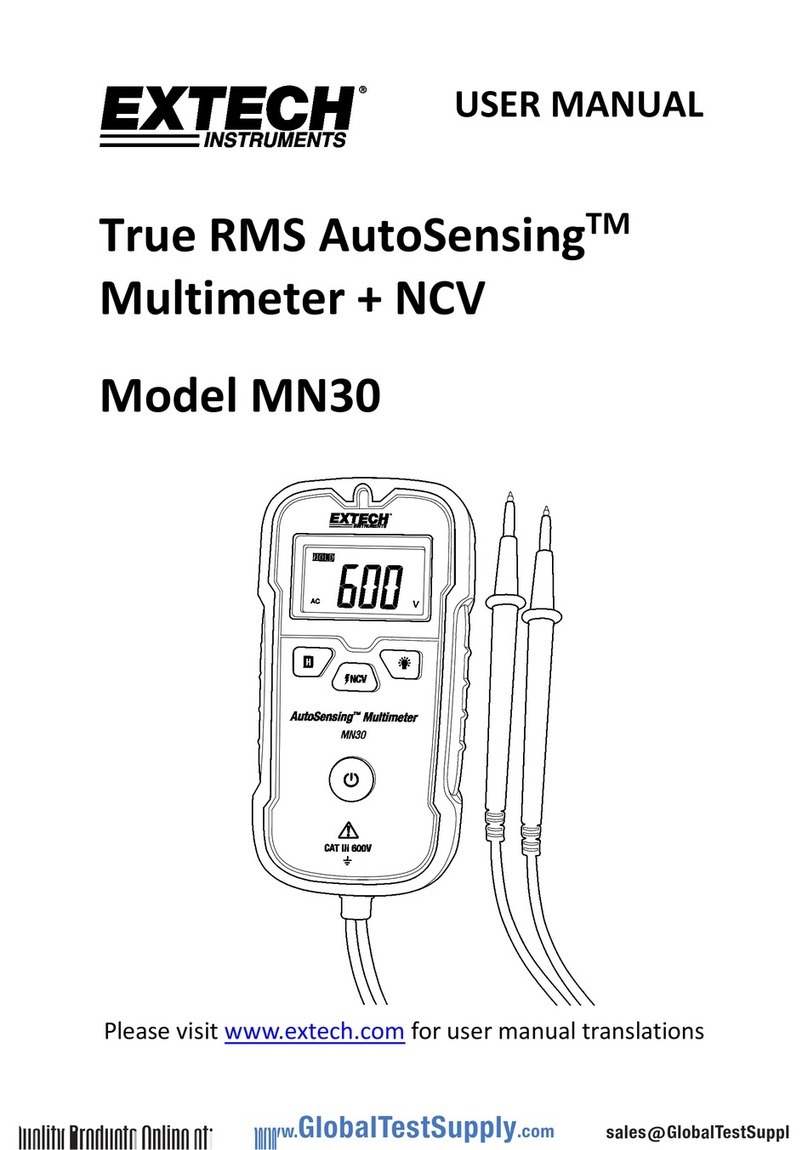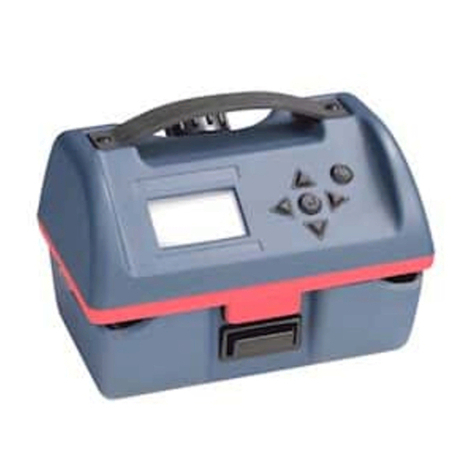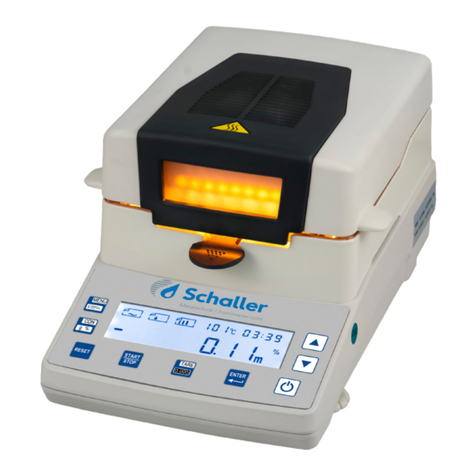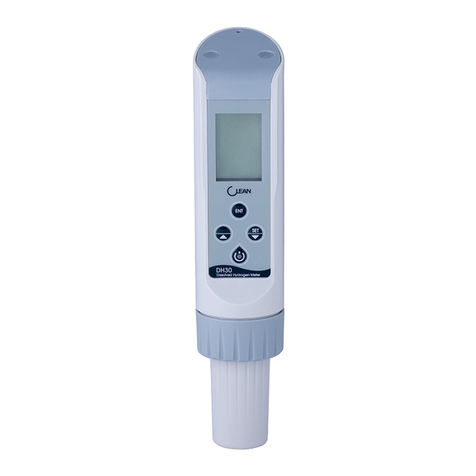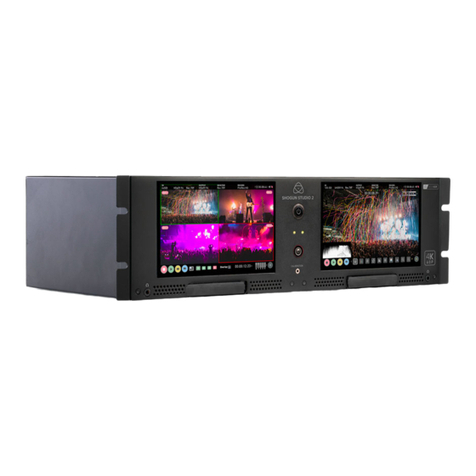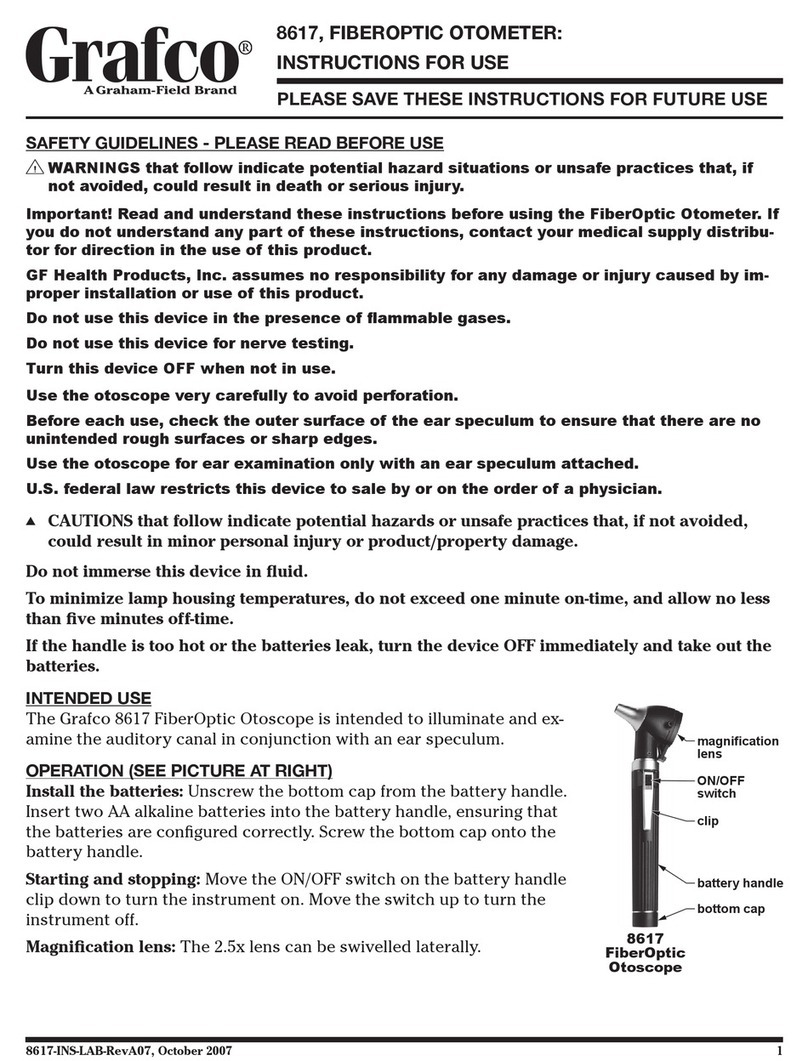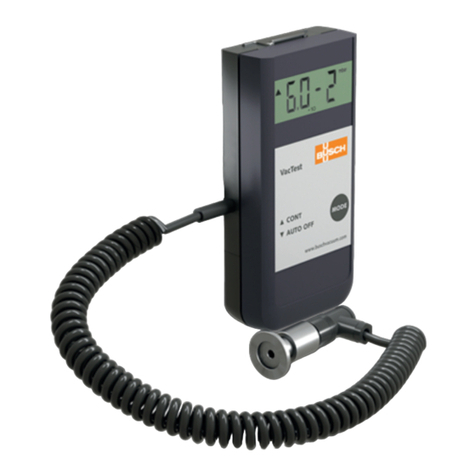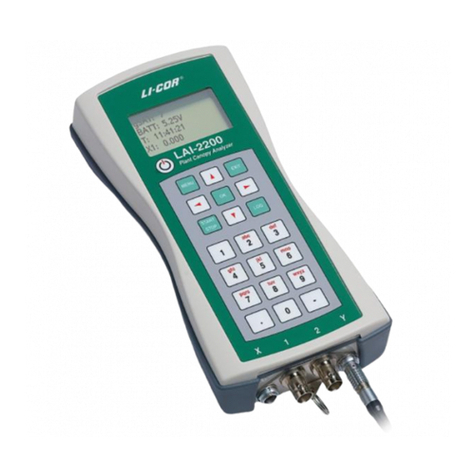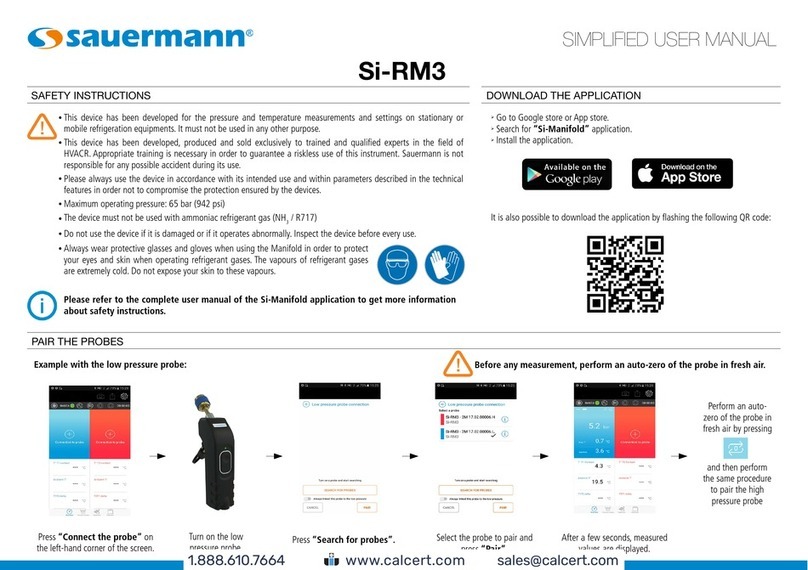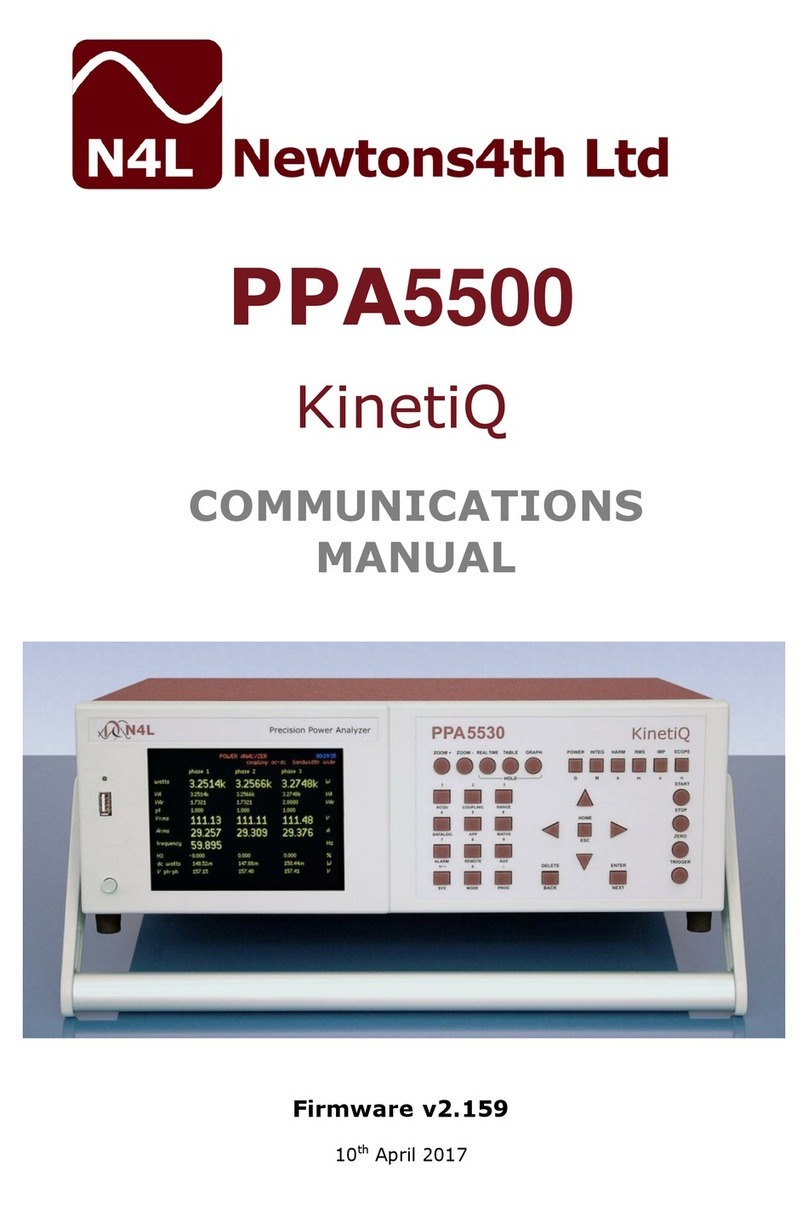Norscan Instruments 4200 User manual

4200 ACU
USER MANUAL
Document Number:
D00801R01 Issue:
6
99059
4200 Alarm Circuit Unit
(ACU)


4200 ACU
USER MANUAL
Document Number:
D00801R01 Issue:
6
03/2011 Page: i
TABLE OF CONTENTS
1. INTRODUCTION..............................................................................................................................................1
1.1 STANDARD FEATURES.................................................................................................................................1
1.2 SPECIFICATIONS ..........................................................................................................................................1
2. THEORY OF OPERATION.............................................................................................................................2
2.1 BASIC MONITORING SYSTEM CONCEPTS.......................................................................................................2
2.2 NORSCAN CABLE MANAGEMENT SYSTEMS.................................................................................................2
2.3 ACU MONITORING (USING STU TERMINATION SENSORS).........................................................................2
2.4 ACU MONITORING (USING TSU TERMINATION SENSORS).........................................................................5
2.5 SPLICE SENSOR UNIT (SSU) OPERATION.....................................................................................................8
2.6 BATTERY FAIL SENSOR (BFS) OPERATION .................................................................................................8
2.7 MULTIPLEXED REMOTE SENSOR (MRS) OPERATION ................................................................................10
3. INSTALLATION.............................................................................................................................................12
3.1 ALARM CIRCUIT UNIT (ACU) CARD..........................................................................................................13
3.2 INSTALLATION AT THE CENTRAL OFFICE ..................................................................................................13
3.3 CONNECTING TO TERMINAL BLOCK (NORTH AMERICAN VERSION) ..........................................................15
3.4 CONNECTING TO TERMINAL BLOCK (UK AND EUROPEAN VERSION).........................................................16
3.5 INSTALLATION AT CABLE VAULT OR CABLE ENTRY LOCATION................................................................17
3.6 INSTALLATION AT SPLICE ENCLOSURE......................................................................................................19
3.7 INSTALLATION AT A TERMINATION ...........................................................................................................19
3.8 BATTERY FAIL SENSOR INSTALLATION:....................................................................................................21
3.9 MULTIPLEXED REMOTE SENSOR INSTALLATION:......................................................................................21
4. CONFIGURING THE ALARM CIRCUIT UNIT CARD...........................................................................22
4.1 LINE SELECTION AND CONFIGURATION.....................................................................................................22
4.2 OUTSIDE PLANT (OSP) LINE CONFIGURATION..........................................................................................22
4.3 ACU ~MONITORING CONFIGURATION .....................................................................................................24
5. ACU MONITORING/OPERATION OVERVIEW......................................................................................27
5.1 MONITORING OPERATION .........................................................................................................................27
6. APPENDIX A – SENSOR CONFIGURATION ...........................................................................................30
CONTACT INFORMATION ..................................................................................................................................36

4200 ACU
USER MANUAL
Document Number:
D00801R01 Issue:
6
03/2011 Page: ii
List of Figures:
Figure 1: Monitoring with Sequenced Termination Units (STU)......................................................3
Figure 2: STU Theory of Operation Diagram....................................................................................3
Figure 3: Cable Alarm - STU Network Schematic .............................................................................4
Figure 4: STU Initialization/Status Test Sequence............................................................................4
Figure 5: Line Alarm - STU Network Schematic................................................................................ 5
Figure 6: Monitoring with Termination Sensor Units (TSU) ............................................................6
Figure 7: TSU Theory of Operation Diagram....................................................................................6
Figure 8: Cable Alarm - TSU Network Schematic .............................................................................7
Figure 9: Line Alarm - TSU Network Schematic................................................................................ 7
Figure 10: Basic SSU Operation......................................................................................................... 8
Figure 11: BFS Installation Diagram....................................................................................................9
Figure 12: MRS Install Diagram .........................................................................................................11
Figure 13: Typical Cable/Sensor Monitoring Installation................................................................... 12
Figure 14: 4200 CMS Slot Designation...............................................................................................14
Figure 15: Transmitter Protection Assembly at Cable Vault (Building Entry)..............................18
Figure 16: Installation at Splice Enclosure...................................................................................... 19
Figure 17: Termination Protection Assembly at Building Entry..................................................... 20
Figure 18: Termination Installation in Splice Enclosure.................................................................21
Figure 19: MRS Connections...............................................................................................................21
Figure 20:4200 CMS Main Menu ........................................................................................................22
Figure 21: Line Control Menu for OSP Line.......................................................................................23
Figure 22: Configure Line Menu .........................................................................................................23
Figure 23: Add Services Menu.............................................................................................................23
Figure 24: Configure Line Menu with armor monitoring.................................................................... 24
Figure 25: Armor configuration...........................................................................................................24
Figure 26: Sensor and Set Line Type chart..........................................................................................25
Figure 27: Select a Baud Rate Menu ...................................................................................................25
Figure 28: Line Control Menu for OSP Line.......................................................................................27
Figure 29: STU List..............................................................................................................................28
Figure 30: STU Test Results Table ......................................................................................................29
Figure 31: Line Control Menu.............................................................................................................31
Figure 32: Configure Line Menu .........................................................................................................31
Figure 33: Armor Configuration Menu................................................................................................31
Figure 34: Sensor Configuration Menu...............................................................................................32
Figure 35: Select Sensor Type Menu....................................................................................................32
Figure 36: Sensor Code Menu .............................................................................................................32
Figure 37: Sensor Update Screen ........................................................................................................32
Figure 38: Sensor Configuration Screen .............................................................................................33
Figure 39: Sensor Configuration menu................................................................................................34
Figure 40: Select Sensor Type..............................................................................................................34
Figure 41: Armor configuration...........................................................................................................34
Figure 42: Update Sensor - MRS.........................................................................................................35
Figure 43: Sensor Configuration - MRS..............................................................................................35
Figure 44: Senor Configuration – MRS Inputs....................................................................................35

4200 ACU
USER MANUAL
Document Number:
D00801R01 Issue:
6
03/2011 Page: 1 of 36
1. Introduction
The 4200 Alarm Circuit Unit (ACU) plug-in card for the 4200 Cable Management System
provides armor, copper pair or tracewire monitoring to an outside plant cable network along
with sensor monitoring of splice enclosure, remote cabinet and building locations. The ACU
can monitor up to 78 miles or 125 kilometers of cable armor/copper conductor and 799
sensor devices. The ACU employs Digital Signal Processing (DSP) circuitry that allows for
adjustable filtering and for future enhancements to measurement and operation capabilities.
Operating over a metallic conductor, such as a cable armor (fiber optic cable), copper pair or
tracewire, the system will detect and warn the user of any damage to the protective cable
jacket ensuring an adequate preparation time for repair. Providing proactive protection, the
system cathodically protects the damage site, which inhibits corrosion of the metallic
conductor, until a repair can be carried out.
1.1 Standard Features
•Alarm thresholds fully adjustable via serial port, modem or telnet connection
•Digitally coded Sensor Units monitor splice enclosures for moisture ingression,
remote cabinets/buildings for environmental and equipment failure
•Cathodically protects the metallic conductor to prevent corrosion
1.2 Specifications
Alarm Circuit Unit (ACU)
Input Voltage -36 to-60 V dc
Output Voltage -48.0 ±0.5 V dc
Voltage Resolution 10 mV dc
Voltage Accuracy ±100 mV dc
Output Current ±25 mA dc
Current Resolution ±5.0 μA dc
Current Accuracy ±10 μA dc
Max. Monitoring Distance 125/78 km/miles
Maximum # of Branch Terminations 20 on STU network, 5 on TSU network
Max. Induced AC Voltage 16 V rms
Sensor Baud Rates 3, 10, 32 baud

4200 ACU
USER MANUAL
Document Number:
D00801R01 Issue:
6
03/2011 Page: 2 of 36
2. Theory of Operation
2.1 Basic monitoring system concepts
When cable infrastructures (which include interconnected splice enclosures, remote
cabinet/building equipment) are exposed to the natural elements they can deteriorate,
become damaged or stop functioning over time. Unfortunately, this is not the only cause
of cable infrastructure damage. Accidental cable dig ups, vandalism and vehicle
collisions with aerial installation structures also account for cable damage. One way to
minimize the down time and reduce costly emergency repairs is to install a cable
monitoring system.
Cable monitoring is accomplished by using some or all of the following:
•Metallic cable shield(s) or armor
•Copper pair conductor
•Tracewire conductor
•Splice enclosure sensors and moisture detection tape
•Termination sensors
•Battery Fail Sensors (remote cabinet/building)
•Multiplexed Remote Sensors (remote cabinet/building)
2.2 Norscan Cable Management Systems
The 4200 ACU card is capable of providing cable, splice enclosure, end to end continuity
and remote cabinet/building monitoring when installed in the 4200 CMS chassis. The
ACU card will monitor the metallic conductor for faults to ground, end to end
connectivity and sensor activation activity to give indication of the condition of the cable
network infrastructure. Very specific sensor types (SSU, STU, TSU, BFS and MRS) are
placed throughout the cable network to monitor for wet splices, termination point testing,
remote cabinet/building battery, fans, heaters and power supplies devices just to name a
few. The ACU card deciphers the codes that are transmitted from the activated sensors,
which are then relayed to the 4200 CMS cable management and alarm reporting
processes.
2.3 ACU Monitoring (Using STU Termination Sensors)
The 4200 ACU card can be configured for monitoring a cable network using a Sequence
Termination Sensor (STU). Using STUs allows for a cable network to have up to 20
monitored branches. The cable network system would be composed of lengths of cable
joined at splice points that have Splice Sensor Units (SSU) installed and branches that are

4200 ACU
USER MANUAL
Document Number:
D00801R01 Issue:
6
03/2011 Page: 3 of 36
terminated by STU sensors. This section will describe how Cable, Line and Sensor
alarms are determined once the above-mentioned devices are installed (Figure 1).
4200CMS
4200 CMS Terminal
99
98
97
STU
STU
STU
01 02 03 20 21 22
41 42 43
31 32 33
Splice/Security Sensors
Figure 1: Monitoring with Sequenced Termination Units (STU)
The ACU card in the 4200 CMS is connected to the conductive metallic conductor and
applies -48 V dc to the cable network system. The cable metallic conductors are
connected together at the splice enclosures. Uniquely addressed Splice Sensor Units
(SSUs) are connected in parallel between the metallic conductor (across Tip and Ring in
copper pair applications) and ground at each splice enclosures to detect water ingression.
The SSUs are electrically invisible until triggered by moisture that enters the enclosure.
A STU sensor is a switch that simulates an open circuit resulting in a nominal line current
of 0.00 mA in a system with no faults to ground and terminates the cable metallic
conductor (Figure 2).
SSU SSU SSU Nominal
Loop
Current
0.00 mA
4200CMS
4200 CMS Terminal
STU
Open
Termination
- 48 V dc applied to Cable Armor
Figure 2: STU Theory of Operation Diagram
When the polyethylene sheath becomes damaged (exposing the metallic conductor) the
line current will start to increase depending on the size of the fault. This is referred to as

4200 ACU
USER MANUAL
Document Number:
D00801R01 Issue:
6
03/2011 Page: 4 of 36
fault loop current. If the fault loop current exceeds a preset threshold, a Cable Alarm
condition will appear on the 4200 CMS (Figure 3).
ntfaultcurre
fault IV
R48
=
M
Fault
Current Fault
Resistance
Termination
(STU)
C.O.
GND C.O.
GND
Detection Line Fault
Location
+
_48 Vdc
Figure 3: Cable Alarm - STU Network Schematic
When installing a new metallic conductor cable network system or connecting additional
branches to existing cable networks using STU sensors, a linear resistance measurement
has to be recorded. This measurement is for comparison purposes to determine conductor
continuity from the office equipment to each termination. A line initialization test must
be performed on each ACU card to determine the nominal line resistance value for each
STU sensor that is connected to the ACU card via the cable metallic conductor. This test
applies a reverse polarity current to the cable network system, which causes each STU
sensor to turn on sequentially (highest to lowest coded STU). Once activated, the highest
number coded STU will first transmit its preprogrammed sensor code, which is decoded
by the ACU card and then initiate the High Current Line Resistance test. It takes
approximately three minutes for each STU sensor to complete the Initialization Test
cycle. Once completed the nominal line resistance value is then recorded for each branch
in the cable network system on the associated ACU card (Figure 4).
TestCycle
STU Code High Current Line
ResistanceTest
Programmed
Delay Period
Line Polarity
Reversed
Standby
Figure 4: STU Initialization/Status Test Sequence

4200 ACU
USER MANUAL
Document Number:
D00801R01 Issue:
6
03/2011 Page: 5 of 36
To check for sensor code decoding and end-to-end line continuity testing, the ACU card
can be programmed to run a STU Status resistance test (daily or weekly) on a periodic
basis. The test sequence is identical to what is shown on Figure 4. The test verifies that
each STU sensor code can be received, thus verifying end-to-end continuity and making
it safe to assume that the SSU codes can be decoded. The test also compares the recorded
nominal resistance value of the Initialization Test to the measured resistance during a
STU Status test. Changes in linear line resistance (metallic conductor continuity from the
office equipment to each termination) are typically caused by a loose or corroded series
bonds at splice points or by a break in the metallic conductor (detection line) as shown in
Figure 5. If the measured line resistance value in the STU Status test exceeds the preset
line resistance threshold above the nominal record resistance value, then a Line Alarm
condition will appear on the 4200 CMS. Note: Normal monitoring operation is resumed
after the STU Status test is completed.
M
48 Vdc Reversed
Loop
Current = 0 mA
Termination
(STU)
C.O.
GND C.O.
GND
Detection Line Open Fault
Location
+
_
Closed
for Test
Figure 5: Line Alarm - STU Network Schematic
2.4 ACU Monitoring (Using TSU Termination Sensors)
The 4200 CMS uses an ACU card that can be configured for monitoring a cable network
using a Termination Sensor Unit (TSU) and Branch Termination Sensors (BTS). The
cable network system would be composed of lengths of cable joined by splices using
Splice Sensor Units (SSU) with the main cable line terminated by one TSU sensor. In
addition, branch termination is accomplished by the use of up to four Branch Termination
Sensors (BTS) in conjunction with a TSU sensor. This section will describe how Cable,
Line and Sensor alarms are determined (Figure 6).

4200 ACU
USER MANUAL
Document Number:
D00801R01 Issue:
6
03/2011 Page: 6 of 36
4200CMS
4200 CMS Terminal
99
98
97
BTS
TSU
BTS
01 02 03 20 21 22
41 42 43
31 32 33
Splice/Security Sensors
Figure 6: Monitoring with Termination Sensor Units (TSU)
The ACU card in the 4200 CMS is connected to the conductive metallic conductor and
applies –48 V dc to the cable armor network system. The cables and metallic conductors
are connected together at the splice enclosures. Uniquely addressed Splice Sensor Units
(SSUs) are also connected in parallel between the metallic conductor (across Tip and
Ring in a copper pair cable network) and ground at the splice enclosure to monitor for
ingression of water. The SSUs are electrically invisible until triggered moisture that
enters the enclosure. The metallic cable conductor is terminated by a TSU sensor and up
to four additional BTS sensors.
The TSU sensor has a built in resistive load of 100kΩthat establishes a controlled
current loop for the cable network system. BTS sensors have the same resistive load and
must be taken into account when calculating controlled loop current. By applying the
following Ohm’s law formula we can arrive at the Inom current which would be 0.48 mA
for a TSU network with one termination (Figure 7).
mA
k
V
R
E
Inom 48.0
100
48 =
Ω
==
SSU SSU
4200CMS
4200 CMS Terminal Termination
TSU
100K
Termination
Loop
Current
SSU
- 48 V dc applied to Cable Armor
Figure 7: TSU Theory of Operation Diagram

4200 ACU
USER MANUAL
Document Number:
D00801R01 Issue:
6
03/2011 Page: 7 of 36
The ACU card in the 4200 CMS applies a -48 V dc to the TSU cable metallic conductor
network. In an ideal situation with no faults to ground the loop current (Inom) would be
0.48 mA. When the polyethylene sheath becomes damaged and exposes the metallic
conductor, the loop current will start to increase. This is due to the parallel resistive fault
and the TSU resistive path along the cable network system. If the cable network system’s
loop current exceeds a preset limit, a Cable Alarm condition will appear on the 4200
CMS (Figure 8).
M
48 Vdc
Fault
Current Fault
Resistance
Termination
100 K - TSU
C.O.
GND C.O.
GND
Detection Line Fault
Location
+
_Termination
Loop
Current
Figure 8: Cable Alarm - TSU Network Schematic
A drop in the loop current would result from an increase in the linear line resistance
(metallic conductor continuity from the office equipment to each termination). This is
typically caused by a loose or corroded series bonds at splice points or by a break in the
metallic conductor (detection line) as shown in Figure 9. The line is considered “open” if
the termination loop current drops below a preset threshold. If the cable network’s loop
current drops below this preset limit, a Line Alarm condition will appear on the 4200
CMS.
M
48 Vdc Loop Current = 0 mA
C.O.
GND
Detection Line Open Fault
Location
+
_
Termination
100 k - TSU
C.O.
GND
Figure 9: Line Alarm - TSU Network Schematic

4200 ACU
USER MANUAL
Document Number:
D00801R01 Issue:
6
03/2011 Page: 8 of 36
2.5 Splice Sensor Unit (SSU) Operation
In a splice enclosure the SSU sensor is connected in parallel, across the metallic
conductor and local ground (across Tip and Ring in a copper pair network). The sensors
are normally in the OFF state and draw no current from the line making the sensor
appear electrically invisible and will not interfere with cable location tone equipment. If
enough moisture enters the splice enclosure, causing the contract wires within the
Moisture Detection Tape (MDT) to create an electrical short at the input leads of the SSU
sensor, the sensor will turn ON. With current now flowing through the sensor, the SSU
transmits a digitally coded address to the 4200 CMS causing a Cable/SSU alarm. A
triggered sensor causes an increase of 1.5 - 2.5 mA in the detection line current. A Cable
alarm may be registered simultaneously if the cable alarm fault level threshold is set
within this current range (Figure 10).
CODE
GEN.
DETECTION LINE
ELECTRONIC
SWITCH
GND
MDT SSU
SSU DATA BURST
Figure 10: Basic SSU Operation
The communication for each Line has to be set correctly on the ACU card to match the
type of sensors that are installed throughout the cable network. Currently there are four
different sensor communication settings which are Standard, SISU, TSU or IRIS.
Standard is used for legacy SSU, BFS and STU termination monitoring, SISU is used for
MRS monitoring along with SSU, BFS and STU sensors that have product model number
accompanied with a ‘-S’ designation. Both TSU and IRIS sensor communication is very
specific to those types of sensor usage and is set accordingly. When installing sensors in
a already populated outside plant cable network, make sure that the new sensors match
the pre-existing sensor line communication scheme.
2.6 Battery Fail Sensor (BFS) Operation
The Battery Fail Sensor (BFS) is designed to monitor a battery backup system at a
Central Office or remote equipment locations using the 4200 ACU card. The BFS is
connected to the monitored cable plant as is any other sensing element (Splice Sensor
Unit (SSU), Sequenced Termination Unit (STU), etc).

4200 ACU
USER MANUAL
Document Number:
D00801R01 Issue:
6
03/2011 Page: 9 of 36
Battery cells under constant charging will deteriorate over time. As the cells begin to
deteriorate they draw more current from the charging source and will begin to heat up.
When the cell overcharges the battery will begin to vent oxygen and hydrogen gases.
These gases can become extremely explosive if they are allowed to accumulate in an
enclosed area. This series of events can be avoided if early detection of the battery half-
string voltage variation or over-charging occurs. The BFS is designed to alarm when
there is a change in battery cell voltage. The alarm is received by the CMS, and then
forwarded to a NOC or maintenance center for immediate attention.
Figure 11: BFS Installation Diagram
The sensor portion of the BFS is powered from the line monitoring voltage provided
from the 4200 ACU card. This ensures monitoring and alarm functionality in the event of
a complete loss of battery power at the remote site. The sensing circuit is powered from
the monitored battery string. The indicator LED on the BFS turns green when the mid-
point voltage of the monitored battery string is within specification. It will turn red when
the battery mid-point voltage goes outside the user selected threshold.
The BFS can monitor up to four -48Vdc battery strings using a midpoint (-24Vdc) and a
full string (-48Vdc) measurement. It uses the midpoint to effectively treat the battery
string as two separate -24Vdc half-strings.
Should one -24Vdc half-string vary from the other by more than the user selected
threshold (0.5-1.75V) or the total battery string fails, the BFS will trigger an alarm. After
a 60 second delay, the indicator LED will turn red and the BFS will transmit its user
programmed code to the central office unit (4200 CMS) for processing and reporting to a
NOC or maintenance center.

4200 ACU
USER MANUAL
Document Number:
D00801R01 Issue:
6
03/2011 Page: 10 of 36
NOTE: The power light may turn off if either half-string voltage drops below -19Vdc.
The BFS, however, will recognize this as a battery failure and still transmit its code to the
CMS for processing.
The BFS will continue to transmit its code until the line is reset or the string differential
returns to within the failure threshold for more than 60 seconds (automatic). The alarm
indication on the 4200 ACU card will remain until the line is reset (requires user
acknowledgement and intervention).
2.7 Multiplexed Remote Sensor (MRS) Operation
The Multiplexed Remote Sensor (MRS) is designed to provide security and equipment
monitoring to remote cabinet/building locations. A typical installation would be in a
DSLAM or E-Cabinet, other locations could be Environmental Vaults or Fiber Optic
Repeater Huts. The MRS is used in conjunction with 4200 ACU card and operates as all
the other Norscan sensors do when activated. Each MRS that is installed in a cable
network is configured with a Base Code (i.e. 1, 17, 33 etc) which represents 16 input
connections along with an associated STU code (used for end to end testing).
The MRS can monitors up to 16 normally open contact closure inputs. These inputs may
monitor such conditions as:
•Security – Access doors
•Commercial AC supply
•Rectifiers – Major & Minor
•DSL – Major & Minor
•Environmental Temperature – Major & Minor
•Back-up Battery – Operation & Condition
•Moisture – Humidity and/or pit water level
Once a specific MRS input is activated, the input code is received by the 4200 ACU card
which activates the alarm process on the 4200 CMS unit. Information regarding the
location of the MRS and which input was activated is relayed in the Alarm Report via
email, SMS, SNMP or modem communication.

4200 ACU
USER MANUAL
Document Number:
D00801R01 Issue:
6
03/2011 Page: 11 of 36
Figure 12: MRS Install Diagram
The status of each MRS connected to the 4200 ACU card and its designated Line (1, 2, 3
or 4) can be tested to verify the operation of each unit. When a status test (end to end
code check) is executed, each MRS will be polled and its STU code is expected to be
received. If a MRS does not respond with its STU code, a Line Alarm will be forwarded
to the alarm monitoring center.

4200 ACU
USER MANUAL
Document Number:
D00801R01 Issue:
6
03/2011 Page: 12 of 36
3. Installation
The following instructions will explain the installation of a 4200 Cable Management System
that is used in conjunction with a 4200 ACU card for metallic cable conductor and sensor
monitoring.
A typical monitored cable network is illustrated in Figure 13 with the 4200 CMS unit located
in the originating central office. In operation, the metallic conductor (armored cable, copper
pair or tracewire) becomes a sensing element which can give indication of damage to the
protective outer jacket (creating a resistive fault to ground), once detected, will cause cable
alarms. To prevent corrosion at any damaged site, the system inherently applies a protective
cathodic current to the metallic conductor.
Addressable sensors are strategically placed throughout the cable network to monitor for
specific occurrences. Splice Sensor Unit (SSU) and Moisture Detection Tape (MTD) are
placed in every splice enclosure to monitor for wet splices. The Sequence Termination Units
are place at the end of each line/branch and monitor the metallic conductor to ensure that end
to end connectivity is maintained along with end of line sensor decode testing. Remote
cabinet/building monitoring is achieved by placing Battery Fail and Multiplexed Remote
Sensors at those locations to indicate the environmental or equipment operation status.
Figure 13: Typical Cable/Sensor Monitoring Installation

4200 ACU
USER MANUAL
Document Number:
D00801R01 Issue:
6
03/2011 Page: 13 of 36
3.1 Alarm Circuit Unit (ACU) card
The Alarm Circuit Unit card provides constant monitoring of the metallic conductor
(detection line) for sensor activation signals, end to end continuity, and faults to ground
damage.
Each ACU card can monitor up to 78 miles or 125 kilometers of continuous metallic
cable conductor or any combination of cables whose combined length is 78 miles or 125
kilometers.
The ACU card can be configured to operate in one of four different line monitoring
modes which are related to the type of communication schemes that the sensors are using
to transmit sensor codes. The four types of communication schemes that are available are
Standard, SISU, TSU or IRIS. The sensor communication requirement is identified by the
model number printed on the sensor label. Model numbers that are not identified with a
‘-S’ are Standard communication, with a ‘-S’ are SISU, TSU model number uses TSU
communication and IRIS model numbers use IRIS. MRS sensors can only use SISU
communication because of the possibility of multiple alarm activations at the same time.
Each Alarm Circuit Unit card can monitor up to 799 sensor cable monitoring devices.
Security products such as the BFS, IRIS or MRS sensors have limits to the number of
these types of sensors that can be installed on an outside plant line, contact Norscan for
more details.
In an ACU/STU network this would include up to 20 STUs and the remaining would be
Splice Sensor Units (SSU).
In an ACU/TSU network this would include 1 TSU, up to 4 Branch Termination Sensors
(BTS) or Branch Circuit Terminations (BCT), and the remaining number can be Splice
Sensor Units (SSU).
3.2 Installation at the Central Office
The Alarm Circuit Unit card (ACU) card can be installed in slots 3, 4, 5 or 6 of the 4200
CMS chassis. Note: A Maximum of four ACU cards can be installed in one 4200 CMS
chassis. Ensure that the 4200 CMS unit is powered off before installing or removing any
of the cards from the chassis.

4200 ACU
USER MANUAL
Document Number:
D00801R01 Issue:
6
03/2011 Page: 14 of 36
Figure 14: 4200 CMS Slot Designation
Figure 14 above illustrates the exposed plug-in slot designation when the back panel is
removed. Slots 1 and 2 are reserved for the LIC and AUIC cards that are keyed to only
allow these two cards to fit into the first two slots respectively. Slots 3 to 6 can
accommodate up to 4 optional plug-in cards that are available for this system. As
mentioned earlier up to 4 ACU cards can be installed in the 4200 CMS chassis to
accommodate four outside plant lines for cable armor monitoring.
Slots 3 to 6
Optional Cards
AUIC
Slot
LIC
Slot

4200 ACU
USER MANUAL
Document Number:
D00801R01 Issue:
6
03/2011 Page: 15 of 36
3.3 Connecting to Terminal Block (North American version)
Connect all wires carefully to the terminal block according to your cable system network.
A description of each connection is explained in Table A.
POSITION FUNCTION DESCRIPTION
TB1-1 -48 Vdc Central office battery voltage connection to -48 Vdc supply. Use a
minimum 16 American Wire Gauge (AWG) wire. Must be fused at 5
amps.
TB1-2 GND Earth or Station ground connection. Use a minimum 16 American
Wire Gauge (AWG) wire.
Note: Not to be confused with CPS Anode GND.
TB1-3 LINE 1
Input connection line for ACU metallic conductor monitoring or
MTM tone access line. Use a minimum 24 AWG wire. Warning:
Must be connected to a Transmitter Protection Assembly unit at the
cable vault area. Shock Hazard Warning (Page 22).
TB1-4 LINE 2
Input connection line for ACU metallic conductor monitoring or
MTM tone access line. Use a minimum 24 AWG wire. Warning:
Must be connected to a Transmitter Protection Assembly unit at the
cable vault area. Shock Hazard Warning (Page 22).
TB1-5 LINE 3
or CPS1
Input connection line for ACU, CPS metallic conductor monitoring
or MTM tone access line. Use a minimum 24 AWG wire. Warning:
Must be connected to a Transmitter Protection Assembly unit at the
cable vault area. Shock Hazard Warning (Page 22).
TB1-6 LINE 4
or CPS2
Input connection line for ACU, CPS metallic conductor monitoring
or MTM tone access line. Use a minimum 24 AWG wire. Warning:
Must be connected to a Transmitter Protection Assembly unit at the
cable vault area. Shock Hazard Warning (Page 22).
TB1-7 CPS ANODE
GND
Cathodic protection sacrificial Anode Ground connection. Use a
minimum 10 AWG wire to connect Anode Ground to this terminal.
Note: Not to be confused with GND.
TB1-8 EQUIPMENT
ALARM Output connection for an external supervisory alarm system. Use a
minimum 24 AWG wire. (Relay switch is normally in OPEN state)
TB1-9 ALARM
COMMON Common connection for an external supervisory alarm system. Use a
minimum 24 AWG wire.
TB1-10 MONITORING
ALARM Output connection for an external supervisory alarm system. Use a
minimum 24 AWG wire. (Relay switch is normally in OPEN state)
TB1-11 PHONE TIP Input connection phone tip line for using modem communication.
Use a minimum 24 AWG wire.
TB1-12 PHONE RING Input connection phone ring line for using modem communication.
Use a minimum 24 AWG wire.
Table A: TB1-Terminal Block Connections (North American version)

4200 ACU
USER MANUAL
Document Number:
D00801R01 Issue:
6
03/2011 Page: 16 of 36
3.4 Connecting to Terminal Block (UK and European version)
Connect all wires carefully to the terminal block according to your cable system network.
A description of each connection is explained in Table B.
POSITION FUNCTION DESCRIPTION
TB1-1 -48 Vdc Central office battery voltage connection to -48 Vdc supply. Use a
minimum 16 American Wire Gauge (AWG) wire. Must be fused at 5
amps.
TB1-2 GND Earth or Station ground connection. Use a minimum 16 American Wire
Gauge (AWG) wire.
Note: Not to be confused with CPS Anode GND.
TB1-3 LINE 1
Input connection line for ACU metallic conductor monitoring or MTM
tone access line. Use a minimum 16 AWG shielded twisted pair wire
(typical length 10 meters). Warning: Must be connected to a LPU and
IVF at the cable vault. LPU not required with MTM.
TB1-4 LINE 2
Input connection line for ACU metallic conductor monitoring or MTM
tone access line. Use a minimum 16 AWG shielded twisted pair wire
(typical length 10 meters). Warning: Must be connected to a LPU and
IVF at the cable vault. LPU not required with MTM.
TB1-5 LINE 3
or CPS1
Input connection line for ACU/CPS metallic conductor monitoring or
MTM tone access line. Use a minimum 16 AWG shielded twisted pair
wire (typical length 10 meters). Warning: Must be connected to a LPU
and IVF at the cable vault. LPU not required with MTM.
TB1-6 LINE 4
or CPS2
Input connection line for ACU/CPS metallic conductor monitoring or
MTM tone access line. Use a minimum 16 AWG shielded twisted pair
wire (typical length 10 meters). Warning: Must be connected to a LPU
and IVF at the cable vault. LPU not required with MTM.
TB1-7 CPS ANODE
GND
Cathodic protection sacrificial Anode Ground connection. Use a
minimum 10 AWG wire to connect Anode Ground to this terminal.
Note: Not to be confused with GND.
TB1-8 EQUIPMENT
ALARM Output connection for an external supervisory alarm system. Use a
minimum 24 AWG wire. (Relay switch is normally in OPEN state)
TB1-9 ALARM
COMMON Common connection for an external supervisory alarm system. Use a
minimum 24 AWG wire.
TB1-10 MONITORING
ALARM Output connection for an external supervisory alarm system. Use a
minimum 24 AWG wire. (Relay switch is normally in OPEN state)
TB1-11 PHONE TIP Input connection phone tip line for using modem communication. Use a
minimum 24 AWG shielded twisted pair wire (typical length 1.5
meters).
TB1-12 PHONE RING Input connection phone ring line for using modem communication. Use a
minimum 24 AWG shielded twisted pair wire (typical length 1.5
meters).
Table B: TB1-Terminal Block Connections (UK & European version)
Table of contents
Popular Measuring Instrument manuals by other brands
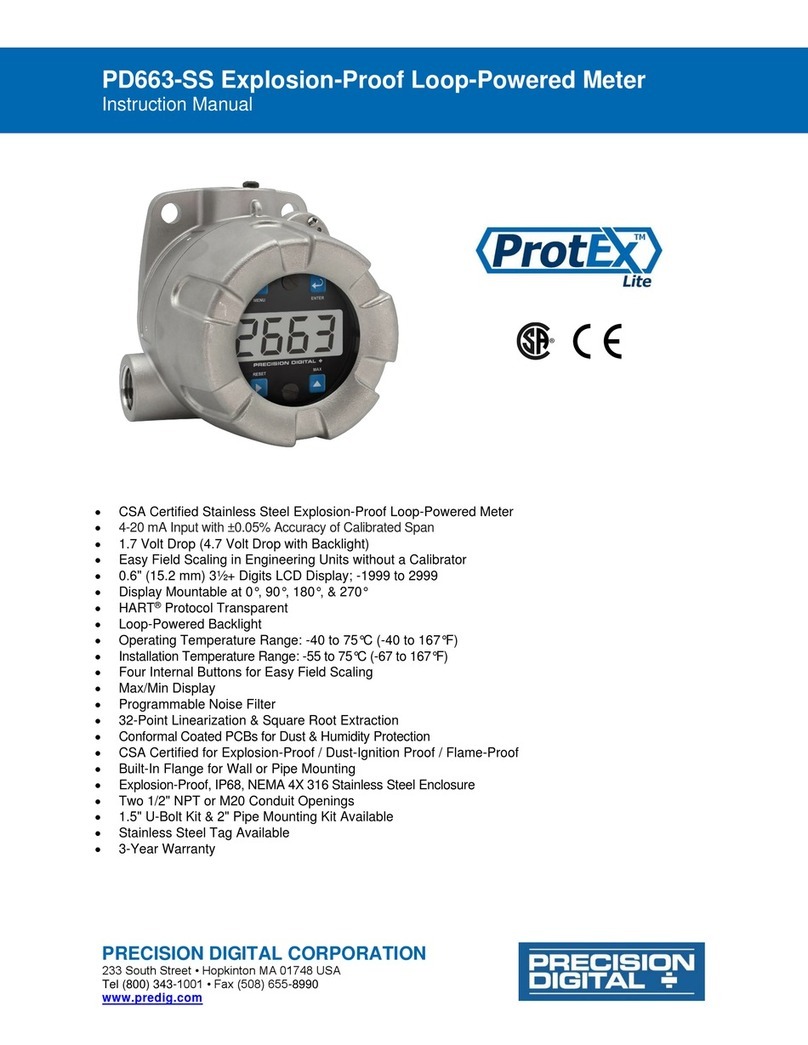
Precision Digital Corporation
Precision Digital Corporation ProtEX PD663-SS instruction manual

Thermo orion
Thermo orion 1818 instruction manual
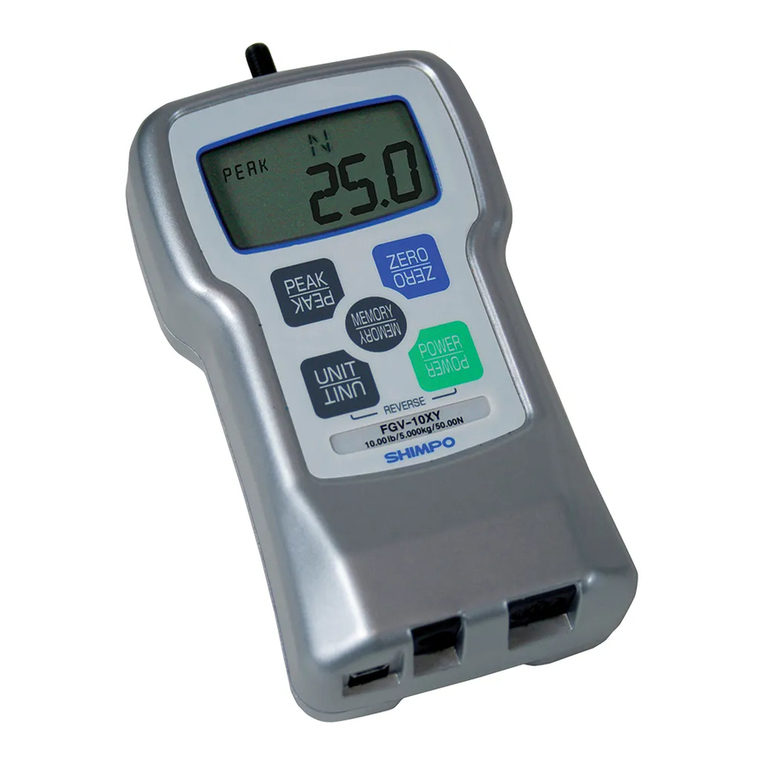
Shimpo
Shimpo FGV-0.5XY instruction manual

Keysight Technologies
Keysight Technologies X Series Custom Installation Notes

ABB
ABB Sensyflow FMT200-D Operating instruction
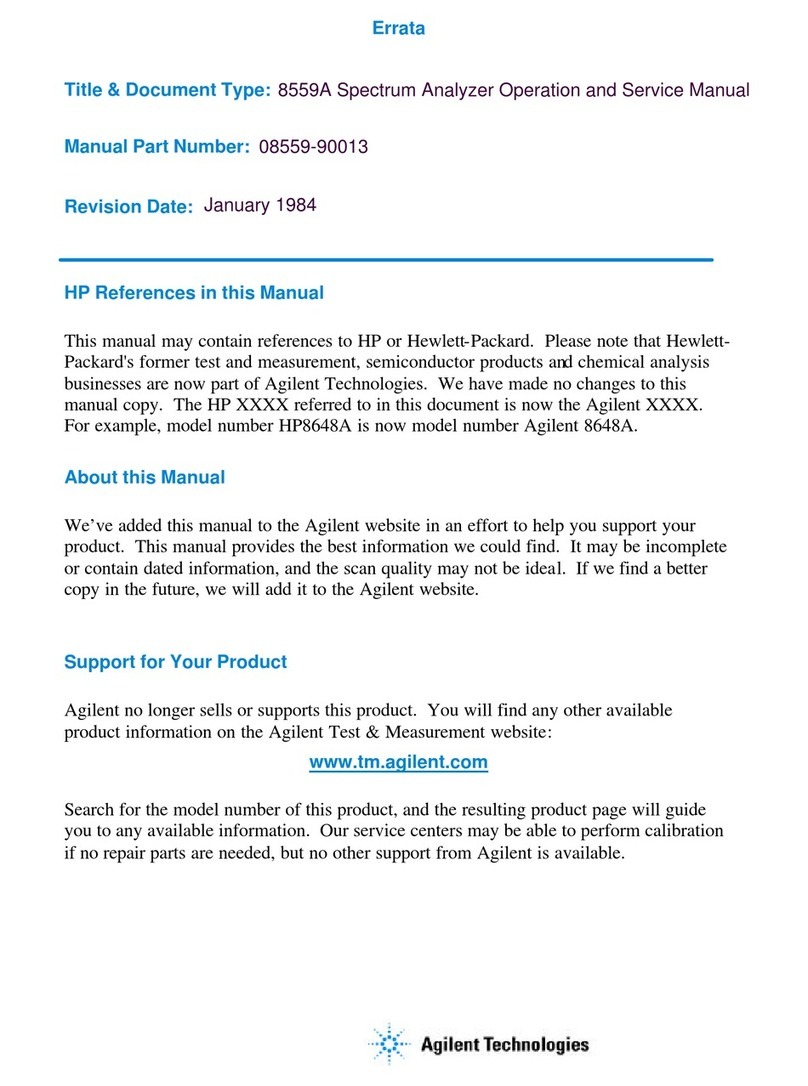
HP
HP 8559A Operation and service manual
